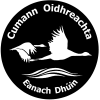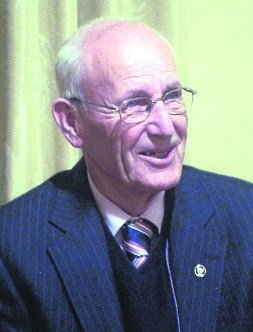John Murphy or Seán Ó Murchú is a native Irish speaker from the parish of Annaghdown. In Addergoole village where he was raised there were many people who spoke mainly Irish, including his mother and uncle, and his father also learned to speak Irish. The Irish on this recording is the version of the language spoken in this area. John’s writing is in the old Irish script, an Cló Gaelach, and his spelling is the pre-standardised form. The notes were written by John in the late 1970s or early 1980s. This video was recorded on 22 July and 8 August 2022. Included below is an account ‘Séasúir na Nodlag le Linn mo Oige-se’ (the Christmas season in my youth), written by John in the old style Cló Gaelach script.
John Murphy ag Léamh










